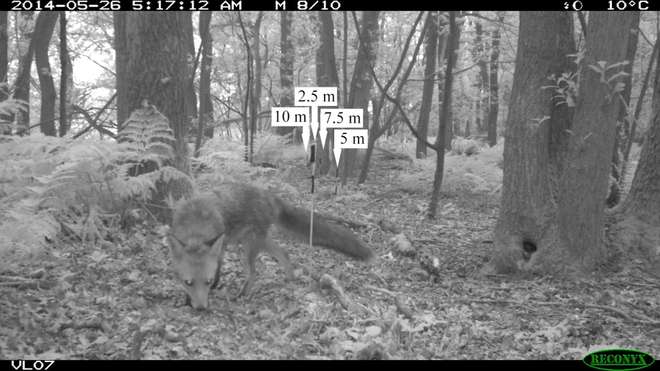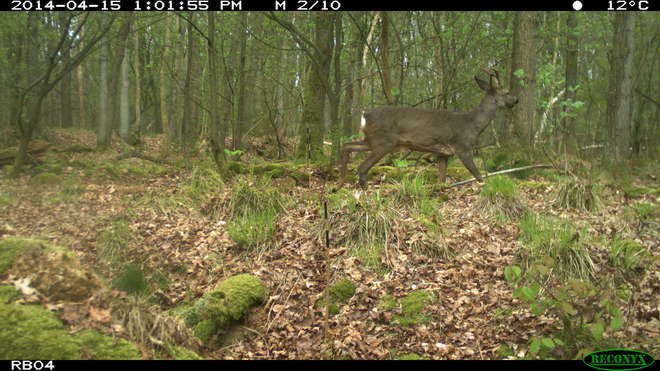Camera trapping is a highly useful tool for estimating animal abundance for wildlife management and conservation. Following our previous blog post we continue to explore camera trapping methods. Here, Tim Hofmeester presents a recent paper about estimating the effective detection distance of camera traps, published in journal Remote Sensing in Ecology and Conservation.
An increasing number of researchers and conservationists use camera traps triggered by a passive infrared (PIR) sensor to study wild animal populations. However, there is a common problem that the PIR sensor does not detect all animals that move past the camera. Moreover, the sensitivity of the PIR sensor is dependent on the size and the surface temperature of the animal, which means that larger animals are detected more easily than smaller ones. Also, plants blocking the ‘view’ of the sensor can cause differences in detection probability between different habitats and sites.

As camera traps are often used to compare different species of animals in one habitat or habitat use of a single species in different habitats, these differences in detectability can result in erroneous conclusions. Therefore, photographic capture rates obtained with camera traps need to be corrected for differences in detectability. This can be done by measuring the distance at which each animal is first photographed for each individual picture, however this task is often too time consuming for researchers and conservationists.
In our article, we present a simple method that allows for the estimation of the effective detection distance for animals of different sizes in different habitats.
We placed a line of markers in front of each camera trap and then used these markers to get a rough estimate of the distance at which animals passed the camera and were detected.
The distance intervals obtained with the markers can be used to estimate the effective detection distance for different species and different habitat types using conventional distance-sampling techniques. Simulations showed that the estimates are accurate so long as sufficient markers are used.

We applied this method to eight areas in two different habitat types, and found that the effective detection distance was four times higher for the largest mammals in these areas than for the smallest.
This means that uncorrected capture rates heavily overestimate the abundance of large mammals compared to small mammals, demonstrating the necessity of this method to obtain more accurate estimates.

This low-budget method increases the set-up time of camera traps only slightly, but allows researchers and conservationists to correct camera capture rates for detection bias, so that better comparisons across different animal species and habitats can be made.

